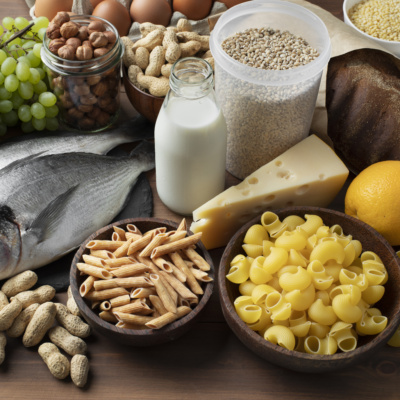top of mind news
- 8 QSR leasing pointers to avoid over-billing, under-maintenance, unexpected charges
- OpenTable tightens control on consumer information
- Could Consumer Packaged Goods Be A Suitable Revenue Stream for Your Restaurant?
- Unexpected Places to Find Savings in Your Restaurants
the farm
Poultry
 For the week ending March 9th, total chicken slaughter was near even with both last week and last year. However, lighter year-over-year bird weights pulled ready to cook (RTC) chicken production down near 1%, bringing the 6-week average to 1.2% below a year ago. Chicken production is expected to begin expanding as early as April, and wholesale prices will likely decline in response. Chicken wing prices have notched a modest bump which is seasonally in line with fill-in needs ahead of March Madness. Yet, wing prices are expected to seasonally decline well into the summer. Price gains for leg quarters have been sharp, hinting a resurgence of chicken export demand.
For the week ending March 9th, total chicken slaughter was near even with both last week and last year. However, lighter year-over-year bird weights pulled ready to cook (RTC) chicken production down near 1%, bringing the 6-week average to 1.2% below a year ago. Chicken production is expected to begin expanding as early as April, and wholesale prices will likely decline in response. Chicken wing prices have notched a modest bump which is seasonally in line with fill-in needs ahead of March Madness. Yet, wing prices are expected to seasonally decline well into the summer. Price gains for leg quarters have been sharp, hinting a resurgence of chicken export demand.
Beef
 The weather bomb cyclone that battered parts of the Southern Plains and Midwest tempered total beef production last week, but an aggressive Saturday harvest salvaged some of those losses. Packers’ need to slaughter the 50k head on Saturday speaks to the beef sales committed for delivery into the early spring. This lessens the likelihood for a sharp pullback on production schedules. Wholesale beef prices continue to escalate, with Choice end cuts making the largest gains as of late. Beef prices usually retreat during this time of year before they accomplish their annual highs which typically occur during May or June.
The weather bomb cyclone that battered parts of the Southern Plains and Midwest tempered total beef production last week, but an aggressive Saturday harvest salvaged some of those losses. Packers’ need to slaughter the 50k head on Saturday speaks to the beef sales committed for delivery into the early spring. This lessens the likelihood for a sharp pullback on production schedules. Wholesale beef prices continue to escalate, with Choice end cuts making the largest gains as of late. Beef prices usually retreat during this time of year before they accomplish their annual highs which typically occur during May or June.
Pork
 Severe winter weather last week caused the extended closure of at least one production plant which limited total pork output. Last week, pork production was down 3.3% week-to-week, but was up 1.6% from a year ago. Pork belly prices are moving sharply higher, but pricing in the $1.30’s is expected to curb some buying enthusiasm in the coming weeks. Since 2014, the average move for the pork belly primal during April was down 16.2%. China remains a bullish story and is supporting lean hog futures as expectations grow for increasing pork exports.
Severe winter weather last week caused the extended closure of at least one production plant which limited total pork output. Last week, pork production was down 3.3% week-to-week, but was up 1.6% from a year ago. Pork belly prices are moving sharply higher, but pricing in the $1.30’s is expected to curb some buying enthusiasm in the coming weeks. Since 2014, the average move for the pork belly primal during April was down 16.2%. China remains a bullish story and is supporting lean hog futures as expectations grow for increasing pork exports.
The Sea
Seafood
 The snow crab leg markets remain inflated, although well off their 2018 highs. U.S. snow crab imports during December were solid, up 45% year-on-year. Despite a bigger fishing season in Alaska, world snow crab supplies are anticipated to remain limited for the next several months due to a small Newfoundland harvest. This could underpin snow crab leg prices.
The snow crab leg markets remain inflated, although well off their 2018 highs. U.S. snow crab imports during December were solid, up 45% year-on-year. Despite a bigger fishing season in Alaska, world snow crab supplies are anticipated to remain limited for the next several months due to a small Newfoundland harvest. This could underpin snow crab leg prices.
The Garden
Produce
 The key tomato growing areas in both Florida and Mexico are transitioning northward. In the Palmetto region of Florida, temperatures have cooled which could temper output. Yet, volumes from Florida have been solid as of late, up north of 10% last week from the prior week and from the same week in 2018. Tomato prices may ease in the coming weeks assuming normal shipments from Mexico. The chief lettuce harvest area is also starting to shift northward in California. There are concerns that recent heavy rains could cause lettuce quality problems.
The key tomato growing areas in both Florida and Mexico are transitioning northward. In the Palmetto region of Florida, temperatures have cooled which could temper output. Yet, volumes from Florida have been solid as of late, up north of 10% last week from the prior week and from the same week in 2018. Tomato prices may ease in the coming weeks assuming normal shipments from Mexico. The chief lettuce harvest area is also starting to shift northward in California. There are concerns that recent heavy rains could cause lettuce quality problems.
The kitchen sink
Dairy
 The cheese markets are trending higher, and the butter markets remain steady. Per the USDA, February milk production was up just .2% due in part to a .8% smaller milk cow herd and a 1% gain in milk-per-cow yields (vs’s 2018). Perhaps most important however was the milk cow herd was unchanged from January making two straight months without any herd loss. This suggests that milk output gains may improve from here. Strong exports have supported the cheese markets this year, but prices usually top in mid-April. This spring’s seasonal move upward for butter is likely to be tempered.
The cheese markets are trending higher, and the butter markets remain steady. Per the USDA, February milk production was up just .2% due in part to a .8% smaller milk cow herd and a 1% gain in milk-per-cow yields (vs’s 2018). Perhaps most important however was the milk cow herd was unchanged from January making two straight months without any herd loss. This suggests that milk output gains may improve from here. Strong exports have supported the cheese markets this year, but prices usually top in mid-April. This spring’s seasonal move upward for butter is likely to be tempered.
Grains
 Heavy rainfall and snowmelt have flooded notable portions of the western grain belt. Concerns are building that the planting season for grains could be further delayed. Although there is a lack of correlation between crop yields and planting timing, delays should shift some acreage out of corn. The grain markets could firm this spring.
Heavy rainfall and snowmelt have flooded notable portions of the western grain belt. Concerns are building that the planting season for grains could be further delayed. Although there is a lack of correlation between crop yields and planting timing, delays should shift some acreage out of corn. The grain markets could firm this spring.
Oil
 Nearby natural gas futures are up 3.2% since last week but still well below their January high. Per the EIA, total U.S. natural gas inventories for the week ending March 8th were 32.4% less than the five-year average for the week. Natural gas prices haven’t been appreciably below $2.500 per MMBtu since June 2016.
Nearby natural gas futures are up 3.2% since last week but still well below their January high. Per the EIA, total U.S. natural gas inventories for the week ending March 8th were 32.4% less than the five-year average for the week. Natural gas prices haven’t been appreciably below $2.500 per MMBtu since June 2016.






